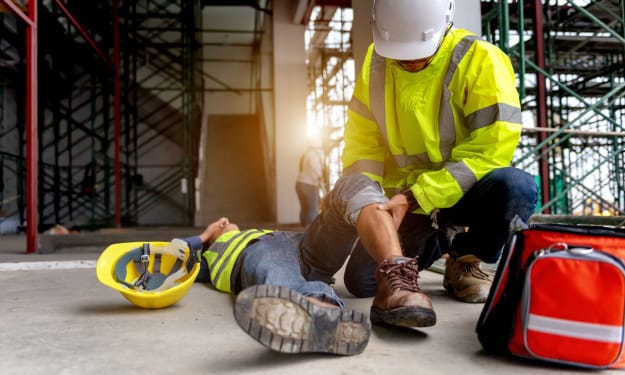
When it comes to space exploration, there are countless challenges that astronauts face on a daily basis. From the harsh conditions of outer space to the delicate machinery they rely on for survival, every aspect of life aboard the International Space Station (ISS) requires attention and care. One recent problem that has captured the attention of scientists and engineers alike is the issue of toxic coolant during inspections of leaking coolant systems on the ISS.
Imagine floating in zero gravity hundreds of miles above Earth, surrounded by darkness and silence. The only sound you hear is your own breathing inside your helmet as you meticulously inspect a leaking coolant system on board the ISS. Suddenly, you notice something alarming – the presence of toxic coolant. This discovery not only poses immediate risks to both human health and valuable equipment but also raises questions about how this dangerous substance found its way into such a critical system. In this article, we will delve into the fascinating yet concerning world of toxic coolant during inspections on the ISS, exploring its potential consequences and possible solutions for ensuring astronaut safety while venturing beyond our planet’s boundaries.
Space Station
The space station, also known as the ISS, is an extraordinary feat of human engineering and exploration. It serves as a symbol of international collaboration and scientific advancement. Situated in low Earth orbit, this state-of-the-art facility provides astronauts with a unique perspective on our planet and the universe beyond. Moreover, it serves as a vital laboratory for conducting experiments that contribute to our understanding of various fields such as biology, physics, and astronomy. The space station’s significance extends beyond its scientific contributions; it represents humanity’s ability to overcome challenges and explore new frontiers in outer space.
With its modular design and advanced technologies, the space station offers an environment where astronauts can live and work for extended periods. This self-sustaining habitat allows crew members to conduct research, perform maintenance tasks, and carry out daily activities necessary for their well-being. Through regular resupply missions from Earth, the space station receives essential provisions such as food, water, air supplies, and equipment needed to sustain life onboard. Furthermore, sophisticated systems ensure that waste is effectively managed while providing clean water for consumption.
However, despite its remarkable capabilities and achievements, the space station is not immune to challenges or risks. One particular concern arises when dealing with coolant leaks within the ISS. These leaks may contain toxic substances that could pose health hazards to the crew if not properly addressed during inspections. Therefore, meticulous procedures must be followed by astronauts when encountering coolant leaks to minimize potential exposure to harmful chemicals.
As we delve into further details about the functioning of the space station in subsequent sections, it becomes evident that every aspect of this incredible structure has been meticulously designed and executed to facilitate human presence in space. From communication systems that enable real-time interactions with ground control centers to complex life support mechanisms ensuring survival outside Earth’s protective atmosphere – each component plays a crucial role in sustaining life aboard the ISS. Together with ongoing technological advancements and collaborative efforts among nations worldwide, the future holds even greater possibilities for the space station and its exploration of our vast universe.
The International Space Station (ISS) is a remarkable feat of human engineering and ingenuity. It serves as a home and workplace for astronauts from different countries, conducting scientific experiments and exploring the mysteries of space. However, even in this high-tech environment, issues can arise that require immediate attention. For instance, during a recent inspection, it was discovered that there was a leaking coolant on the ISS. This posed a significant risk to the crew’s safety due to the toxic nature of the coolant. Thankfully, NASA swiftly addressed the situation and implemented measures to contain the leak.
To put things into perspective, did you know that the ISS travels at an astonishing speed of approximately 28,000 kilometers per hour? That’s more than 17,000 miles per hour! With such incredible velocity, any malfunction or hazard onboard could have disastrous consequences not only for the crew but also for our ongoing exploration efforts in space. The discovery of a leaking coolant highlights how meticulous monitoring and maintenance are crucial in ensuring the safety and smooth operation of the space station.
Upon detecting the coolant leak, NASA promptly activated their emergency protocols to safeguard everyone on board. Specialized teams were mobilized to determine the source of the leak while simultaneously assessing its potential impact on both equipment and personnel. In parallel, contingency plans were devised to mitigate any risks associated with exposure to toxic substances. Thanks to these swift actions coupled with advanced technologies available aboard the ISS, astronauts remained safe throughout this challenging ordeal.
In light of this incident, it becomes evident just how vital continuous monitoring and inspections are for maintaining optimal conditions within space stations like the ISS. As we continue pushing boundaries and venturing further into space exploration endeavors, it is imperative that we learn from such incidents to enhance our understanding of potential threats and develop better preventive measures. By doing so, we ensure that future missions remain safe while enabling humanity’s continued quest for knowledge beyond Earth’s atmosphere—ushering us into a new era of space exploration.
In conclusion, the recent discovery of a toxic coolant leak during an inspection on the International Space Station (ISS) serves as a stark reminder of the risks and challenges faced by astronauts in their pursuit of scientific advancement. The presence of hazardous substances within this confined environment not only poses immediate threats to the health and safety of those onboard but also raises concerns about long-term environmental effects.
One statistic that sheds light on the gravity of this situation is that approximately 40% of all spacewalks conducted by ISS crew members are dedicated to maintenance and repairs. This staggering figure highlights how crucial it is for astronauts to constantly monitor and address potential issues that may arise on the orbiting laboratory. It emphasizes the immense dedication and commitment shown by these individuals who willingly put themselves at risk to ensure the smooth operation of the station’s vital systems.
As we contemplate this unprecedented incident, let us appreciate the relentless efforts made by our astronauts aboard the ISS in pushing the boundaries of human knowledge while facing unimaginable challenges. Their unwavering courage inspires us all, reminding us of both our shared vulnerability as inhabitants of Earth and our collective responsibility in ensuring a safe and sustainable future for space exploration.
About the Creator
Nora SG
I love writing articles, poetry and children's stories, which I sell on Amazon, I also design images, especially on artificial intelligence programs, and I sell on several sites, and I have 5 years of experience






Comments (2)
this is a very amusing article. I enjoyed reading it."
Great work in highlighting the challenges and risks that astronauts on the International Space Station (ISS) face during their space exploration endeavors, particularly the recent discovery of a toxic coolant leak during inspections.